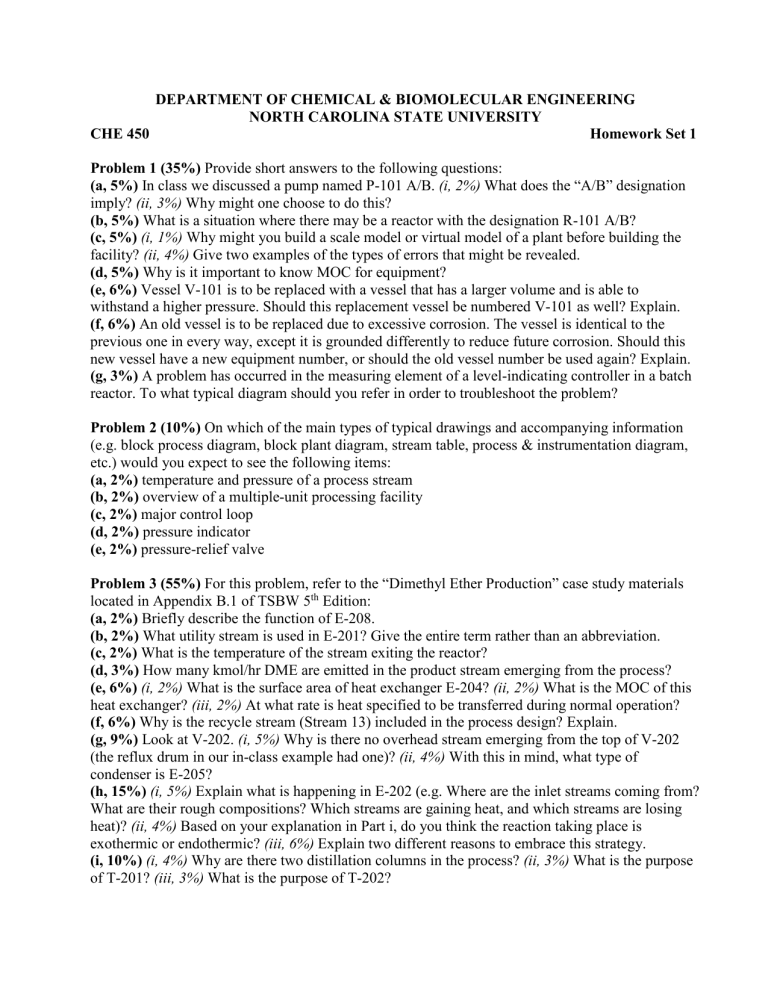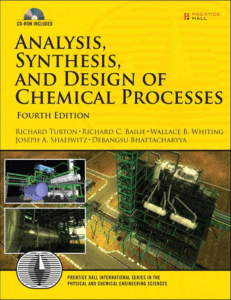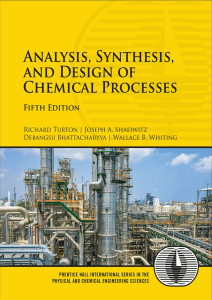
DEPARTMENT OF CHEMICAL & BIOMOLECULAR ENGINEERING NORTH CAROLINA STATE UNIVERSITY CHE 450 Homework Set 1 Problem 1 (35%) Provide short answers to the following questions: (a, 5%) In class we discussed a pump named P-101 A/B. (i, 2%) What does the “A/B” designation imply? (ii, 3%) Why might one choose to do this? (b, 5%) What is a situation where there may be a reactor with the designation R-101 A/B? (c, 5%) (i, 1%) Why might you build a scale model or virtual model of a plant before building the facility? (ii, 4%) Give two examples of the types of errors that might be revealed. (d, 5%) Why is it important to know MOC for equipment? (e, 6%) Vessel V-101 is to be replaced with a vessel that has a larger volume and is able to withstand a higher pressure. Should this replacement vessel be numbered V-101 as well? Explain. (f, 6%) An old vessel is to be replaced due to excessive corrosion. The vessel is identical to the previous one in every way, except it is grounded differently to reduce future corrosion. Should this new vessel have a new equipment number, or should the old vessel number be used again? Explain. (g, 3%) A problem has occurred in the measuring element of a level-indicating controller in a batch reactor. To what typical diagram should you refer in order to troubleshoot the problem? Problem 2 (10%) On which of the main types of typical drawings and accompanying information (e.g. block process diagram, block plant diagram, stream table, process & instrumentation diagram, etc.) would you expect to see the following items: (a, 2%) temperature and pressure of a process stream (b, 2%) overview of a multiple-unit processing facility (c, 2%) major control loop (d, 2%) pressure indicator (e, 2%) pressure-relief valve Problem 3 (55%) For this problem, refer to the “Dimethyl Ether Production” case study materials located in Appendix B.1 of TSBW 5th Edition: (a, 2%) Briefly describe the function of E-208. (b, 2%) What utility stream is used in E-201? Give the entire term rather than an abbreviation. (c, 2%) What is the temperature of the stream exiting the reactor? (d, 3%) How many kmol/hr DME are emitted in the product stream emerging from the process? (e, 6%) (i, 2%) What is the surface area of heat exchanger E-204? (ii, 2%) What is the MOC of this heat exchanger? (iii, 2%) At what rate is heat specified to be transferred during normal operation? (f, 6%) Why is the recycle stream (Stream 13) included in the process design? Explain. (g, 9%) Look at V-202. (i, 5%) Why is there no overhead stream emerging from the top of V-202 (the reflux drum in our in-class example had one)? (ii, 4%) With this in mind, what type of condenser is E-205? (h, 15%) (i, 5%) Explain what is happening in E-202 (e.g. Where are the inlet streams coming from? What are their rough compositions? Which streams are gaining heat, and which streams are losing heat)? (ii, 4%) Based on your explanation in Part i, do you think the reaction taking place is exothermic or endothermic? (iii, 6%) Explain two different reasons to embrace this strategy. (i, 10%) (i, 4%) Why are there two distillation columns in the process? (ii, 3%) What is the purpose of T-201? (iii, 3%) What is the purpose of T-202?






